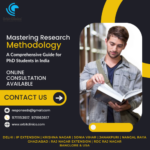‘Demystifying Death: Philosophical, Scientific, Cultural, and Psychological Perspectives on Our Inevitable End and the Anxiety it Engenders’

Written by
Dr. Deepak Sharma
BHMS, MD, Ph.D. (Scholar)
Homeopathic Physician and Educator
Founder – Orbit Clinics (World Class Homeopathic Clinics Worldwide)
Introduction:
Death, an enigmatic term, universally known yet profoundly personal. It transcends culture, race, religion, and time, serving as the irrefutable endpoint to the human journey. A subject so complex and yet, paradoxically, so simple, it leaves an indelible mark on human consciousness.
Often, the mere mention of death elicits an emotional reaction of discomfort, fear, or even denial. However, it is an undeniable reality that each one of us will face. This article seeks to dispel the encircling mystery, fear, and misconceptions surrounding death, encouraging a new perspective on this inevitable phase of existence.
The Philosophy of Death:
Philosophers from antiquity to the present day have contemplated death. It has been argued that death is the event that gives life its meaning, the definitive terminus to our story. The ancient Stoics maintained that contemplating death instills a sense of urgency, encouraging us to live authentically and appreciate the present moment.
Existentialists such as Jean-Paul Sartre viewed death as an absolute end, hence, urging the individual to shape their life with authenticity, as it is the only one they have. On the other hand, spiritual interpretations of death often suggest a transition or transformation rather than an end, nurturing a sense of continuity beyond physical existence.
Death in Science and Medicine:
Scientifically, death is defined as the cessation of all biological functions that sustain a living organism. Yet, advancements in modern medicine have complicated this definition. The concept of brain death, for instance, challenges traditional notions of mortality, turning it into a more nuanced process rather than a singular event.
Moreover, our understanding of death at the cellular level continues to evolve. For example, apoptosis, or programmed cell death, is an essential part of life. Cells in our bodies ‘choose’ to die to maintain the overall health of the organism. This cellular altruism is a stark reminder of the interconnected dance of life and death that occurs within us every moment.
The Cultural Perspective of Death:
Culture, too, shapes our perception of death significantly. In Western societies, death is frequently perceived as an adversary, something to be fought against relentlessly. The language of illness often includes phrases such as “battle,” “fight,” or “resist,” embodying an underlying war against mortality.
Contrarily, Eastern philosophies and indigenous cultures often view death as a natural part of the life cycle. For example, in Buddhism, death is regarded as a transition into another life, reinforcing the cyclical nature of existence.
The Psychology of Death:
From a psychological perspective, the fear of death, or thanatophobia, can be profound. The unknown nature of death, coupled with the certainty of its occurrence, often triggers existential anxiety. However, acknowledging and confronting this fear can lead to personal growth. In fact, the burgeoning field of terror management theory suggests that our behavior is greatly influenced by subconscious fears of death.
Elisabeth Kübler-Ross’s seminal work on the five stages of grief also provides insight into the psychological processes individuals undergo when dealing with impending death or significant loss. Acceptance, the final stage, is achieved when individuals make peace with the inevitable, cultivating resilience in the face of mortality.
The Intricacies of Thanatophobia:
As we delve deeper into the psychology of death, thanatophobia, or the fear of death, warrants a comprehensive discussion. Thanatophobia is not merely a fear but a complex and multifaceted anxiety disorder. It can manifest in various ways and is often linked to other psychological conditions such as panic disorder and health anxiety.
The fear of death is inextricably woven into our psyche, bound to the human condition. It is a response to the unknown and uncontrollable nature of death and the existential anxiety it can induce. Thanatophobia can stem from a fear of the dying process, fear of the unknown after death, fear of oblivion, or fear of separation from loved ones.
Not all reactions to death are pathological, but when the fear becomes all-consuming and hinders one’s quality of life, it evolves into thanatophobia. People with this condition may experience extreme anxiety, intrusive thoughts about death, excessive worry about health, avoidance behaviors, and even physical symptoms like heart palpitations, shortness of breath, or dizziness.
Facing Thanatophobia:
Overcoming thanatophobia is a journey that requires understanding and acceptance. Cognitive-behavioral therapy (CBT) can be an effective tool for managing this fear. CBT helps individuals understand the thought patterns that lead to fear and teaches coping mechanisms to alleviate anxiety. Exposure therapy, a subset of CBT, can also be useful. It gradually exposes individuals to their fear in a controlled environment, helping them manage their response over time.
Psychodynamic therapies can uncover the root cause of the fear, tracing it back to unresolved childhood conflicts or traumatic experiences related to death. A strong therapeutic alliance can provide a safe and supportive environment for individuals to explore these difficult emotions.
Facing one’s mortality through practices like mindfulness and meditation can also help. These practices foster a deep connection with the present moment and can reduce anxiety by shifting focus away from the uncertain future.
End-of-life conversations can be another constructive method to mitigate thanatophobia. Discussing end-of-life wishes, advance care planning, or even funeral arrangements can demystify the process of dying, making it less intimidating.
Furthermore, the study of different cultural, philosophical, and spiritual perspectives on death can offer alternative narratives, presenting death not as a grim ending but as a natural part of existence.
Thanatophobia and Growth:
In a paradoxical twist, confronting thanatophobia can sometimes lead to profound personal growth. Recognizing and grappling with the reality of our mortality can engender a sense of urgency, motivating us to live more fully, authentically, and purposefully. It can spark a reassessment of our values and priorities, prompting us to make meaningful changes and cultivate deeper relationships.
The Final Transition: Death as a Part of Life
Death, despite its finality, is not an end but a transition—an intricate part of the grand tapestry of existence. By reframing our perception of death, we can embrace life more fully, imbuing each moment with mindfulness, gratitude, and purpose. Death can be an illuminating guide, reminding us of our mortality, our resilience, and, paradoxically, our enduring connection to the cycles of life.
After all, as the ancient Roman philosopher Seneca wisely noted, “Death, the most dreaded of evils, is therefore of no concern to us; for while we exist death is not present, and when death is present we no longer exist.”
Our finite existence can thus be perceived not as a constraint but as an opportunity—an opportunity to make our life a meaningful, compassionate, and thoughtful voyage, knowing that every journey, however vibrant and varied, has its sunset. Embracing death is embracing life, acknowledging that each sunrise, each breath, each moment of joy and sorrow, is invaluable because it is not everlasting.
Death is not a full stop, but a comma in the continuum of existence, a catalyst for appreciating the fleeting beauty of life. It urges us to imbue our days with purpose and our hearts with love, as we dance this ephemeral dance of existence. For it is in the quiet acceptance of death, we truly begin to live.
Navigating Death: Practical and Emotional Aspects
In practical terms, dealing with death can be challenging. Yet, careful planning and open discussions about end-of-life choices can ease this journey considerably. Advance directives, for instance, allow individuals to communicate their healthcare wishes, providing a sense of control and peace of mind for both themselves and their loved ones.
On an emotional level, grief counseling and support groups can provide solace during the mourning process. Despite the commonality of loss, the experience of grief is deeply personal. Expressing grief openly, without the pressure of conforming to societal norms, allows for healing and acceptance.
Death and the Digital World:
In the digital age, our relationship with death has gained a new dimension. Digital platforms provide innovative ways to memorialize the deceased, from virtual cemeteries to social media pages serving as online shrines. These digital memories create a form of digital immortality, challenging the traditional concept of ephemerality associated with death.
However, this immortality comes with complexities. Legal and ethical questions surrounding the posthumous management of digital assets have surfaced. Laws continue to evolve, striving to navigate this uncharted territory, reflecting our ever-adapting perceptions of death.
Death: A Teacher for the Living
In conclusion, death, as grim as it may seem, serves as an enlightening teacher. It imparts valuable lessons on impermanence, compassion, resilience, and most importantly, the preciousness of life. It inspires us to lead lives of purpose and authenticity, encouraging us to be present in the moment.
Shakespeare wrote in his play Julius Caesar, “Cowards die many times before their deaths; The valiant never taste of death but once.” Instead of shrinking in fear of death, we can embrace its certainty as motivation to live fearlessly and fully.
The prospect of death encourages us to cultivate empathy towards those facing end-of-life experiences, to appreciate our loved ones, to seek reconciliation, and to express love unabashedly. It serves as a reminder to nourish our physical and emotional wellbeing, to cultivate a healthy lifestyle, and to engage in activities that bring joy and fulfillment.
Conclusion:
In our exploration of death, we have journeyed across philosophy, science, medicine, culture, psychology, and even digital landscapes, unraveling the many facets of this universal constant. In doing so, we have endeavored to diminish the shadow of fear that often accompanies thoughts of our mortality, proposing instead a vision of death as an essential part of life’s rhythm, a significant chapter in the book of existence.
In retrospect, it is clear that death is not merely an end but a transition, a significant stage that enhances our appreciation of life and contributes to our growth as individuals. By accepting and understanding death, we can diminish the power of thanatophobia, leveraging this acceptance to live more enriched, meaningful lives.
We can redefine our relationship with death from one of dread to one of acknowledgment, viewing it as a natural process rather than an adversary. And by embracing the inevitable, we grant ourselves the freedom to live fully, seizing the moment, and imprinting our unique mark on the tapestry of time.
The digital age brings with it new questions and considerations about death, highlighting our evolving understanding of mortality in an increasingly virtual world. Our exploration into this digital realm reflects our persistent quest for continuity and meaning, even as we grapple with impermanence.
As we conclude this enlightened examination of death, let us not retreat into our old ways of fear and denial. Instead, let us carry forward this newfound understanding, utilizing it as a compass to guide our lives. Let us remember that our mortal journey is not a trek towards darkness but a passage towards a new dawn.
In the grand scheme of existence, death is but a bridge—a passage that connects the visible and the invisible, the known and the unknown, the temporary and the eternal. By acknowledging this reality, we allow ourselves to live more empathetic, authentic, and purposeful lives, mindful of our existence, and respectful of our inevitable end.
As we continue our individual and collective journeys, let us remember that each life, each story, is a unique melody in the symphony of existence. And while the notes may eventually fade, the music—the essence of our lives—resonates far beyond our physical presence, reminding us that while death may be the final horizon, it is not the end of our influence or the cease of our echoes.
Homeopathic Intervention for Thanatophobia
Homeopathy is a system of alternative medicine that has been in use for over two centuries. It is based on the concept of “like cures like,” which suggests that a substance that causes symptoms in a healthy person can cure similar symptoms in an ill person when given in a very diluted form.
While no homeopathic remedy can be a complete solution to thanatophobia, there are several options that might help to alleviate some of the associated symptoms when used alongside other treatments. Always consult a homeopath or healthcare provider for personalized advice. Here are a few homeopathic remedies that may be considered in cases of thanatophobia:
- Aconitum Napellus: This remedy is often used for acute, intense anxiety that comes on suddenly. It might be particularly useful for people whose fear of death is accompanied by restlessness and physical symptoms such as palpitations or shortness of breath.
- Arsenicum Album: This remedy might be suitable for those with thanatophobia who are anxious, restless, and fear being alone. They may also fear the future and have a strong desire for order and control.
- Ignatia Amara: This remedy is often used for emotional upset caused by grief or loss. It may help individuals who are prone to mood swings and who alternate between tears and laughter.
- Phosphorus: This remedy may be used for individuals who are generally fearful and crave company and reassurance. They may have a strong fear of death, darkness, and being alone.
- Gelsemium: This remedy is often used for anticipatory anxiety, which could be beneficial for individuals who fear the process of dying and what lies beyond.
- Calcarea Carbonica: Individuals who may benefit from this remedy might have a fear of change and a strong desire for security, which could manifest as fear of death.
Remember, these remedies should not be used as a substitute for professional medical advice. Thanatophobia can be a complex condition and it is important to seek the advice of a healthcare provider if you are experiencing symptoms. Homeopathy can be a useful adjunct to other treatments, but it should not be the sole approach to managing thanatophobia.




